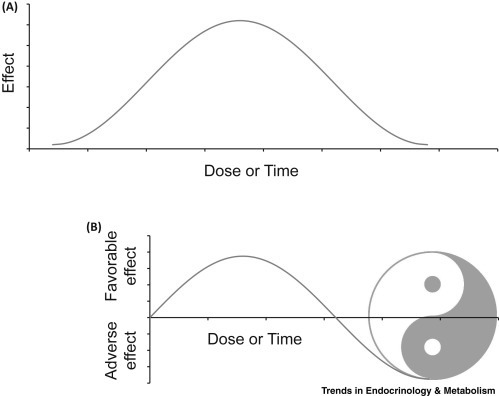Introduction
In the realm of decision-making, the concept of hormesis provides a thought-provoking mental model. Hormesis refers to a phenomenon where exposure to low or moderate levels of stress or toxins can result in beneficial effects, contrary to what one might expect. This model has significant relevance as it challenges our perception of risk and encourages us to consider the potential benefits of calculated exposure to adversity. Anchored in human psychology, hormesis influences our daily lives, impacting personal choices, business strategies, and public policy-making.
Defining Hormesis and Its Relevance in Decision-Making
Hormesis describes the dose-response relationship in which a favorable response or adaptation occurs in response to low or moderate levels of stressors. While high doses may be harmful, small doses of stress or exposure can activate positive biological, psychological, and societal responses. In decision-making, hormesis encourages individuals and groups to recognize that certain challenges or adversities, within a manageable range, can lead to personal growth, innovation, and improved outcomes. Understanding and harnessing hormesis can help us make more informed and balanced decisions.
Examples of Hormesis in Various Contexts
- Personal Life Decisions: Consider an individual who regularly engages in physical exercise. While intense exercise can lead to injury or burnout, moderate exercise stimulates the body’s adaptive responses, resulting in improved physical fitness and overall well-being. The controlled stress of exercise triggers hormesis, promoting strength, endurance, and mental resilience.
- Business Scenarios: In the business world, organizations often face disruptive changes, such as new technologies or market shifts. Companies that proactively expose themselves to small doses of calculated risks, such as investing in research and development or exploring new markets, can adapt and thrive in dynamic environments. Embracing hormesis enables them to stay ahead of the curve and seize opportunities.
- Public Policy-Making: In public policy, hormesis can guide decision-making related to public health crises. For instance, a government that implements targeted vaccination campaigns in areas with low immunization rates exposes the population to a small dose of the vaccine to stimulate immune responses. This approach can prevent outbreaks and contribute to herd immunity, protecting the community.
Mental Biases and Psychological Underpinnings
Confirmation Bias plays a role in hormesis by reinforcing preconceived notions of risk aversion. People tend to seek information that confirms their beliefs, potentially overlooking the potential benefits of moderate exposure to stressors. This bias can lead to missed opportunities for growth and improvement.
The Loss Aversion Bias, driven by the fear of losses, may prevent individuals from embracing hormesis. The preference for avoiding potential harm can lead to an overly cautious approach, limiting personal development, and hindering progress.
Practical Strategies to Embrace Hormesis
- Assess Risk-Benefit Ratio: Evaluate the potential risks and benefits of a situation or decision. Consider the possibility of hormetic effects, where a controlled exposure to stressors could result in positive outcomes. Strike a balance between caution and the potential for growth and improvement.
- Gradual Exposure: Instead of avoiding challenges altogether, embrace a gradual approach to exposure. Start with small doses of stress or adversity, allowing yourself to adapt and build resilience. Monitor your responses and adjust accordingly, gradually increasing the level of exposure.
- Learn from Failures: Embrace failures and setbacks as learning opportunities. Reflect on past experiences where small doses of adversity led to personal growth or valuable insights. Emphasize the lessons learned and use them to inform future decisions and actions.
- Seek Support and Guidance: Surround yourself with a supportive network of individuals who understand and embrace the concept of hormesis. Collaborate with mentors or coaches who can provide guidance and help you navigate the challenges and potential benefits of calculated exposure to stressors.
Conclusion
Hormesis challenges our innate aversion to stress and adversity by highlighting the potential benefits of calculated exposure. By understanding the concept of hormesis and its prevalence in decision-making, we can make more informed choices, fostering personal growth, innovation, and resilience. Identifying and addressing biases that hinder hormesis is essential for unlocking its potential. Embracing small doses of stress or adversity can lead to transformative outcomes, and actively avoiding the trap of risk aversion is key. Awareness and an open mindset are crucial in harnessing the power of hormesis to shape a more fulfilling and successful life.
